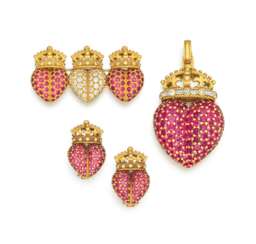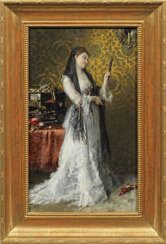esel

Friedrich Geselschap was a German historical painter who worked in the Classical style. He studied painting at the academies of fine arts in Dresden and Düsseldorf with Karl Ferdinand Sohn, Heinrich Mücke and Friedrich Wilhelm von Schadow.
The Romantic-religious aspects of the Nazarenes had little influence on Gezielschap's artistic development. Rather, it was guided by their neo-classical ideas. It was the ancient models and his fascination with the Italian Renaissance masters, above all Raphael, that made Friedrich Gesellschap a proponent of idealism.


Michael Wesely is a German art photographer who is best known for his photos of cities, buildings, landscapes, and still lives of flowers taken with a special ultra-long exposure technique. Michael Wesely lives and works in Berlin.


Michael Wesely is a German art photographer who is best known for his photos of cities, buildings, landscapes, and still lives of flowers taken with a special ultra-long exposure technique. Michael Wesely lives and works in Berlin.


Michael Wesely is a German art photographer who is best known for his photos of cities, buildings, landscapes, and still lives of flowers taken with a special ultra-long exposure technique. Michael Wesely lives and works in Berlin.


Michael Wesely is a German art photographer who is best known for his photos of cities, buildings, landscapes, and still lives of flowers taken with a special ultra-long exposure technique. Michael Wesely lives and works in Berlin.


Rogelio Polesello was an Argentine painter, muralist and sculptor. He was best known for making Op art (or optical art) known in Latin America. He won two Konex Awards; one in 1982 and another in 2012.


Rogelio Polesello was an Argentine painter, muralist and sculptor. He was best known for making Op art (or optical art) known in Latin America. He won two Konex Awards; one in 1982 and another in 2012.


Günter Weseler was a German artist. He became known for his “breath objects”, which make up the main part of his work. With these “New Species”, as he called his objects, Weseler was one of the most important German avant-garde artists of the 1960s and 1970s. At the beginning of his artistic career, Weseler kept coming back to painting. At times he turned to the fantastic, he painted cubist staggered houses, approached organic associations in abstract images with spatula work. In 1964, Günter Weseler began to study the phenomenon of breathing. In 1966 he went on to "visual shaping of the rhythm of breathing" with breathing balloons inflated with compressed air, about two meters in size, from which the air escaped again, and finally to the mechanically controlled fur objects. He placed his faceless, breathing fur creatures in the most varied of life situations. Depending on location, place and situation, they can completely change their character.































































